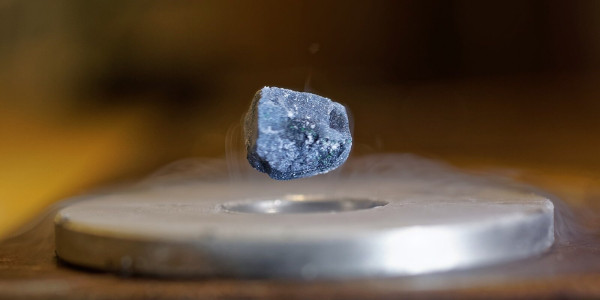Using computations to accelerate the search for new superconductors
By Nicola Nosengo/NCCR MARVEL
The world needs more superconductors. These materials, that under the right conditions have no electrical resistance and expel magnetic fields, are applied in medical imaging technologies such as magnetic resonance; they keep plasma confined in experimental nuclear fusion reactors and are key to the future of this technology; they make maglev trains levitate above their rails, allowing them to travel without friction. And there’s so much more they could do, if we had more superconductors capable of operating at ambient pressure and at manageable temperatures. But since the discovery of superconductivity in 1911, only about one viable superconductor per year has been added to the list on average, and most discoveries have come from targeted investigations of knowns materials or from serendipity. Computational methods can help identify potential new superconductors hiding among thousands of materials that have been found and classified but have not been tested for this property yet.
In a new article published in PRX Energy, a group of researchers that includes MARVEL members from the Paul Scherrer Institute and EPFL describe how they’ve used a new computational workflow to scan large databases of materials in search of those that tick the right boxes for superconductivity. In particular, they wanted to find those with a critical temperature – that is, the temperature at which superconductivity appears – above 20K. “Our goal is to find a ductile superconductor above the temperature of liquid hydrogen” says Samuel Poncé, a professor at Université catholique de Louvain in Belgium who led the project together with Nicola Marzari from MARVEL, EPFL and PSI. “This is very important for MRI scans that need to withstand vibrations”. Current superconductors used in MRI machines require to be cooled at 4K with liquid helium, but liquid hydrogen would be significantly cheaper.

A superconductor levitating above a ring magnet. Credit: Julian Litzel (Jullit31), CC BY-SA 3.0 via Wikimedia Commons.
The search yielded a few dozen well-known superconductors, which validates the method. But most importantly, it pointed to 24 promising new candidates that have never been tested for superconductivity so far.
The scientists started from over 900,000 crystal structures found in 3 major databases of materials that have been experimentally characterized. They used density functional theory (DFT) calculations to calculate their electronic structure and select only non-magnetic metals, restricting the list to 4533 materials. They then used perturbation theory to calculate the interactions between electrons and phonons, that are collective vibrations of atoms in the crystal structure. It is exactly out of this interplay between electrons and phonons that superconductivity arises.
By progressively increasing the precision of their calculations of phonons and electrons, the authors selected the 949 materials with the highest critical temperatures. To those they applied a more refined calculation called the Electron-Phonon Wannier (EPW) workflow. This step allowed to further restrict the list to a database of 250 metals with a promising superconductivity profile, on which the author did an extensive literature survey.
They found that 82 of them are known superconductors, with the computed critical temperatures in good agreement with the experiments. Among the 168 materials that are not currently knowns as superconductors, they identified 24 with a predicted critical temperature above 10 K.
The authors singled out three examples that they subjected to more detailed and computationally intensive calculations. One is the hole-doped double-gap superconductor BaB2, whose structure is reminiscent of a well-known superconductor, MgB2, and has a predicted critical temperature of 61.6 K.
Then there is ZrRuSb, which belongs to the family of half-Heuslers compounds, characterized by a XYZ chemical structure (where X and Y are transition metals) and with distinctive thermoelectric properties. ZrRuSb has a predicted 11.1 K critical temperature, and if experimentally confirmed it would be the first half-Heusler with conventional superconductivity, which also makes it interesting from a theoretical point of view. Finally there is TaRu3C, a perovskite with a predicted critical temperature of 25.0 K.
The study’s computations were implemented using the AiiDA infrastructure automated workflow, and the resulting data is now available on the Materials Cloud.
"This work truly showcases the MARVEL ethos,” says MARVEL Director Nicola Marzari. “Accurate and predictive simulations, full reproducibility, and completely open access to all the data and the calculations. It is a model on how computational materials discovery can and should be done".
Reference
Marnik Bercx, Samuel Poncé, Yiming Zhang, Giovanni Trezza, Amir GHorbani Ghezeljehmeidan, Lorenzo Bastonero, Junfeng Qiao, Fabian O. von Rohr, Giovanni Pizzi, Eliodoro Chiavazzo, Nicola Marzari, "Charting the Landscape of Bardeen-Cooper-Schrieffer Superconductors in Experimentally Known Compounds" PRX Energy, 4 (3) 2025. https://doi.org/10.1103/sb28-fjc9
Low-volume newsletters, targeted to the scientific and industrial communities.
Subscribe to our newsletter